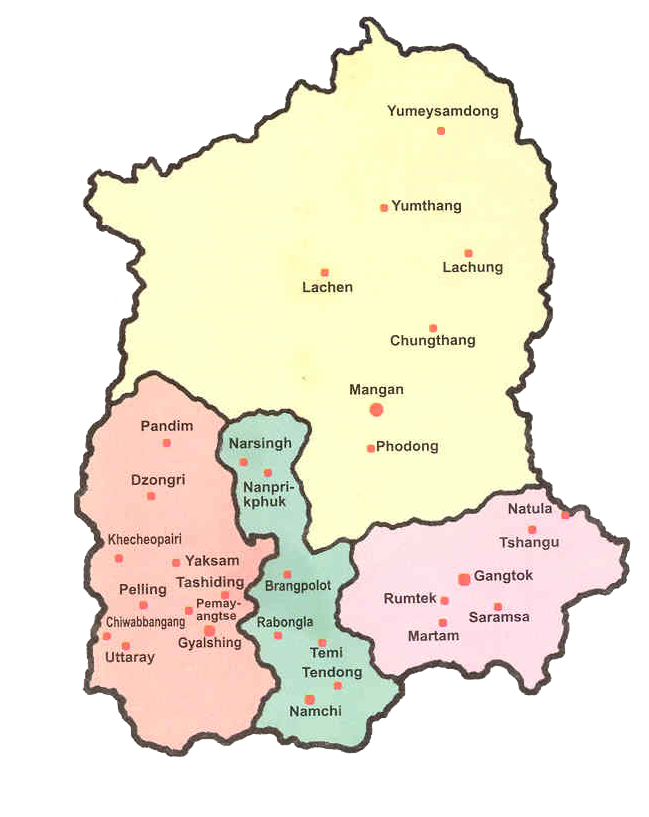
Total Geographical Area :
7096km2
Status : 22nd state of Indian Union.
Geographical location : 270 N to 280 N & 870 E to 880 E.
Population : 540,493
Decimal population growth:
Absolute : 134,036 i.e. 32.98%
Density : 76/Sqkm
Sex ratio : 857F/1000M
Persons in 0-6 age group:
Absolute % to total population
Total -77,170 14.285
Male- 38,865 13.48
Female-38,314 15.19
Literacy:
Absolute % to total population
Person-322,828 69.68
Male -191,326 76.73
Female-38,314 131,502
Source: Provisional Census Book, Directorate of Census operation, Sikkim-2001
Administratively
the state, Sikkim divides itself into four districts viz.
North, East, South, and West. Sikkim a biological hot spot
is well known for its biodiversity. Due to its varied
climatic conditions the state harbors a wide variety of
flora and fauna. This rich flora of the state is not only
a boon to the local people but it has been attracting
plant hunters, tourists and nature admirers for the last
three centuries. The vegetation of the region is well
characterized predominantly by tropical deciduous,
subtropical, wet temperate, sub alpine, moist alpine and
dry alpine forests.
Type of forest and Altitude:
Tropical Moist Deciduous - 300-900m
Subtropical - 900 - 1800m
Wet temperate - 1800-2400m
Sub alpine (Rhododendron forest) - 2700-3700m
Moist alpine - 3700m
Dry alpine/alpine meadows - 4400m -above and moorland

1. East Himalayan wet temperate
Forest
2. Broad leaved hill
3 Sub alpine Rhododendron
4. Gregarious Sal
5. Scrub/Alpine Scrub
6 Moist Alpine- Alpine Meadow
7. Non forest Area
Sikkim being a hot spot has a huge repository of biological resources .Documentation of these biological resources is of out most importance for Research and development works, Conservation protection and to avoid activities like bio-piracy. Sikkim Bioinformatics Centre has created these data of biodiversity using primary resources like Books, Published researched paper and net and secondary data like field visit and questionnaires.
About 36 endemic Spp. have been found in Sikkim; some of them are as follows:

Aconitum forex
Ophiorrhiza truetleri,
Chirita oblongifolia,
Actinodaphne Sikkimensis,
Elaeocarpus sikkimensis,
Rhododendron sikkimensis,Mahonia sikkimensis.
